The Worst Time to Visit Sri Lanka in 2025 (And Why You Shouldn’t Overthink It)
Sri Lanka is a vibrant, year-round destination, but a quick search for the “worst time to visit” will inevitably lead you to a discussion about the country’s dual monsoon system. This article uses historical weather data to give you an idea of the rainiest periods, but my best advice is not to overthink the timing.
While the data below shows the most challenging months for certain regions, every season has its trade-offs. Ultimately, the “best” or “worst” time depends entirely on your travel priorities and preferences.
The Weather Breakdown: When the Rain is Heaviest
Sri Lanka’s weather is governed by two main monsoon seasons, which essentially ensure that one half of the island is usually enjoying sunshine while the other is getting wet.
| Region | Monsoon (Wet) Period | Worst Months | What it Impacts |
|---|---|---|---|
| South & West Coasts (Galle, Mirissa, Bentota, Colombo) | Yala Monsoon | May to August | Beach holidays, swimming, and clear skies in the south/west. |
| East & North Coasts (Arugam Bay, Trincomalee, Passikudah) | Maha Monsoon | October to January | Surfing, beach access, and coastal travel in the east/north. |
| Cultural Triangle (Sigiriya, Dambulla, Anuradhapura) | Inter-Monsoon | October to December | Can receive heavy, unpredictable rain and high humidity. |
But in seasons like November, you can enjoy some fun facts. Refer them to reading this: Is November a Good Time to Visit Sri Lanka?
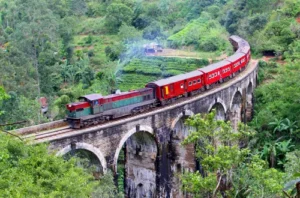
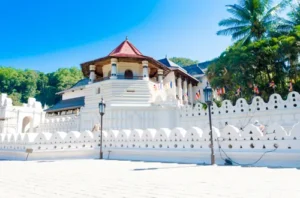
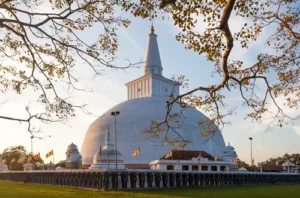
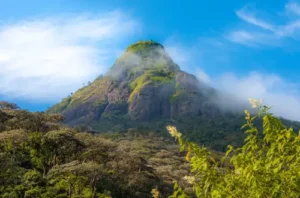
The Pros and Cons of Visiting During the “Worst Time”
Based on my observations, and seeing countless visitors from the UK, Europe, Russia, the US, and other countries travel here every single month of the year, there are huge benefits to ignoring peak-season travel advice and embracing the so-called “off-season.”
Pros of Visiting During the Monsoons (The “Worst Time”):
- Lower Costs & Better Value: This is the most significant pro. During the May–July and October–November periods, demand drops. You can secure substantially lower prices on accommodation, from budget guesthouses to luxury resorts, offering incredible value compared to the peak season (December–March).
- Fewer Crowds: Want to climb Sigiriya or explore the Dambulla Caves without the queues? Visiting during the quieter months means you’ll have a more tranquil, intimate, and less rushed experience at major tourist sites.
- Lush, Green Landscapes: The rain transforms the island. The Hill Country (Ella, Nuwara Eliya) is at its most beautiful and vibrant, with tea plantations appearing exceptionally lush and misty, creating stunning photo opportunities.
- Flexible Travel: With fewer tourists, you’ll find more flexibility in booking tours, transport, and excursions at short notice.
Cons of Visiting During the Monsoons (The “Worst Time”):
- Rain and Rough Seas: You will encounter rain, which can be heavy and disruptive. On the affected coast, the sea can be too rough for swimming, water sports, or even boat trips.
- Limited Services: On the East Coast during November and December, some smaller beach towns like Arugam Bay may have reduced services, with certain guesthouses and restaurants temporarily closed.
- Humidity: Rainfall, particularly during the inter-monsoon periods (October/November), brings high humidity, making sightseeing hot and sticky.
- Festival Crowds (Shoulder Seasons): If you visit in April (New Year) or July/August (Kandy Esala Perahera), you’ll hit massive domestic crowds and travel disruption, even if the weather is good in parts.

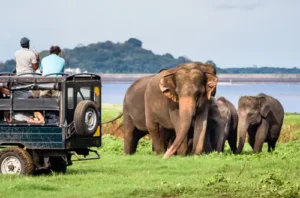
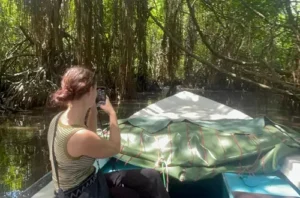

Smart Planning: How to Win with Sri Lanka’s Dual Weather in 2025
The key to a successful Sri Lankan trip is knowing where to be and when. Don’t let a specific date stop you from booking; just adjust your itinerary.
| If you visit during the Southwest Monsoon (May–August)… | Head East! The East Coast (Trincomalee, Arugam Bay) is in its dry season, offering perfect sunshine, flat seas, and the best surfing conditions. |
| If you visit during the Northeast Monsoon (October–January)… | Head South! The South and West Coasts (Galle, Mirissa) are in their dry season, with great beach weather and ideal conditions for whale watching. |
| If you visit during the Inter-Monsoon (October/November)… | Focus on the Interior! While coastal rain is an issue, the Cultural Triangle and Hill Country are more accessible, and lower crowds make sightseeing easier. |
The absolute “Worst” time to visit Sri Lanka, if forced to choose a single period where weather is most challenging across multiple regions or coastal access is severely limited, would be Late May to Mid-July (due to the peak southwest monsoon) or November (due to the peak northeast monsoon and unsettled inter-monsoon period).
The Best Time: For the most consistent, reliably good weather across the most popular areas (South/West Coasts and Cultural Triangle), aim for January to March.
My Opinion: Your Preference is Key
This blog is written using past weather patterns, but it is just my opinion. The time is best or worst, depending entirely on your preference.
Are you a sun-worshipper who can’t tolerate rain? Stick rigidly to the dry seasons. Are you a budget-conscious traveller or a dedicated photographer who wants empty trails and lush rainforests? Embrace the ‘worst’ time.
Every month, the beautiful island of Sri Lanka welcomes thousands of visitors, proving that you don’t need perfect weather to have a perfect trip. Read this guide, get an idea, and book your adventure!



